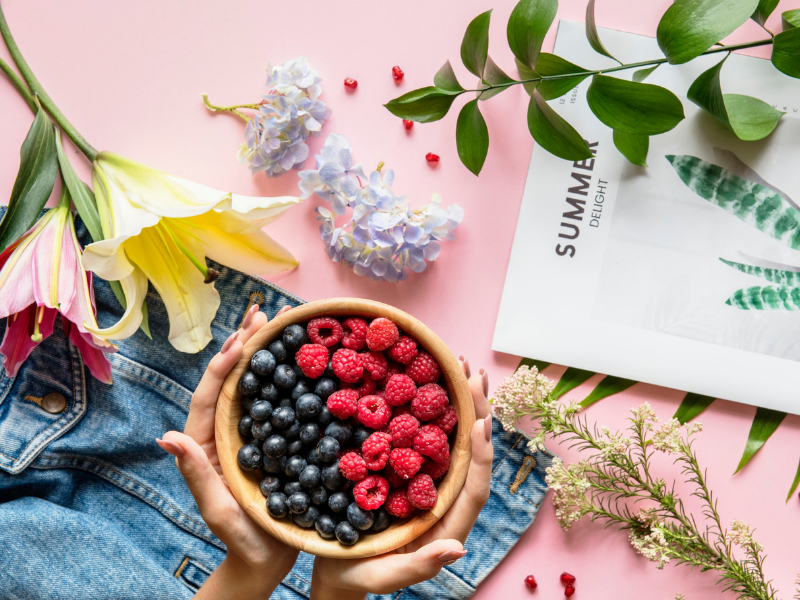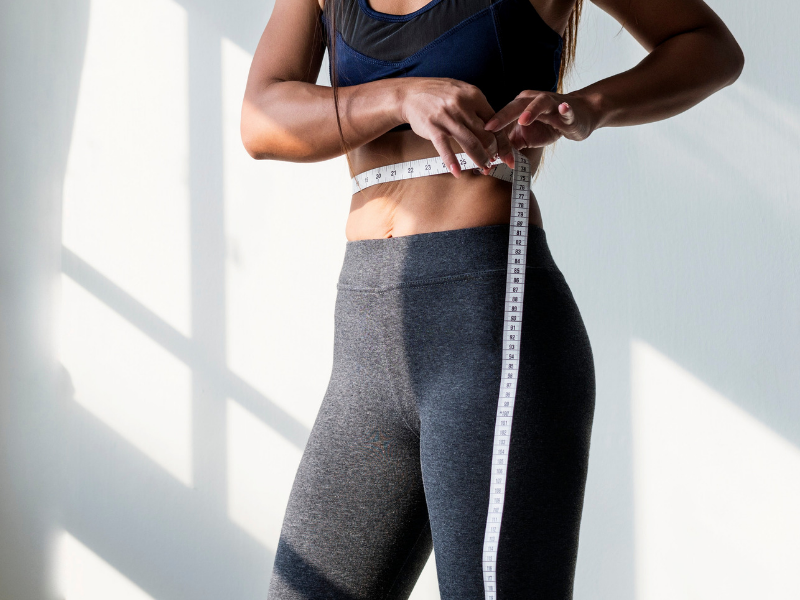Why Is My Curly Hair Curly?
It’s the question that trials all of us. ”Why exactly is my curly hair curly?” Sure, curls are undeniably beautiful, unpredictable, and apparently interesting enough for some straight hair individuals to ask if they can touch it (sound familiar?) But when it comes to the science behind our curls the answer is rather simple.
As stated in a 2014 article published by Northwestern: Science & Society, ”It turns out that the shape of our follicles is the major determinant of our hair texture.” The difference between straight and curly? When analyzing the follicles of straight hair you would notice the shape is round. On the other hand, curly hair tends to exhibit an oval shape. Curly hair also has more protein bonds, a factor that contributes to texture.
…
Introduction
My grandmother was the one who taught me how to style my hair and care for it. During my elementary school days, I mostly remember her coming over very early in the morning (she lived a few miles away at the time and still owned a house) just to cook breakfast for the two of us since my parents were already at work. After eating we would go upstairs and there, in my small bathroom, I was placed in a little chair for and for the next thirty minutes, she would twist and braid, twist and braid—sometimes tugging on my hair to get the knots out.
I had long braids with lots of ‘’sheen’’ as she called it. Shiny, thick black curls that fell right above my lower back. Some of my classmates would even touch my hair just to see if it was real or not. They simply could not get how someone looking like me, a colored individual, could have hair like that. This confession was something, which, even to this day, still prompts me into a state of ponder and surprise. What excuse would there be for anyone, of that matter, to not be able to have such hair? All hair grows. All hair can reach similar qualities—if properly maintained. Nevertheless, the fact that my hair was long and curly was something unworldly to them.
Middle School was a tough period for my hair, as this was the time I first discovered this torturous yet attractive concept called ‘’straightening.’’ It took a lot of negotiation, but eventually, there I was sitting in another chair—except this time it wasn’t my grandmother standing behind me but an employee from the JC Penny Salon. Dozens of minutes passed. Hair was sizzling and making sounds like flour making contact with a deep fryer because of the protective spray being used. Then came the grand finale. The chair was whipped back around. I saw my reflection.
To put it simply: Once I straightened my hair I fell short of maintaining my old curly hair routine. During this time I also fell under the impression that straight hair, as most of my classmates had, was ‘’better looking’’ than curly. (Sound familiar?) Sure enough, it didn’t take long before I was dealing with split ends and oil buildup. And it was not until early high school when I finally began longing for the hair I was originally blessed with. Another thing that happened during this time: I listened to my grandmother, tossed out the flat iron, and began investing my time in researching hair remedies on how to repair the damage that was done. Luckily, almost 15 years later, my hair texture has grown back just fine.
The process is still ongoing, but here I will share what remedies and brands worked for me. Furthermore, I will also touch on advice that any beginner should know about caring for their naturally curly hair (the natural way).
Table of Contents
Where To Start
The Dos and Don’ts
To Comb Or Not To Comb (In the Shower)
Hair Masks (What Are They/How Often)
Natural Remedies
Where To Start
Looking for more helpful and practical lifestyle advice? Go here: Nxt Modern Guides
Know your texture. What is your hair texture like? For some people, this process revealed they had a mix. For others, it may be straightforward. Take a look here and see what you come up with.
Why is knowing your hair texture so important? Well, for starters this information will tell you exactly what you should be or should not be putting in your hair. An example would be products that tend to dry out one hair type over the other.
As for me, the area right below the top of my head tends to soak up product much faster than the rest of my hair. And by keeping this in mind I have been investing my money in Coconut Oil—aka the holy grail of hydration and other natural benefits—these past few years. Not only has the Coconut Oil last much longer over my entire head, but the results have also lead to improvement in my overall hair shaft and frizz.
But while on the subject of frizz, let’s talk about . . .
Analyzing problem areas. You would not keep walking on a broken leg without a cast, would you? If you answered no (which hopefully is the case) then this same thought process should be applied to your hair as well. Got frizz? Try a combination of coconut oil and 1 raw egg (one-two times a week). Avocado and olive oil work wonders too!
The point is this: The longer you let these problem areas go unnoticed the harder (and longer) the recovery process will be. For me, back when I stopped straightening my hair, it was not until a week after seeing my hair in its natural state that I realized how damaged it was.
Understanding the hair shaft. As I like to believe, everyone’s hair shaft has a personality of its own. And like I touched on earlier, everyone will also have different hair textures, tolerances, and weaknesses the next person may or may not share.
So what is the hair shaft exactly? In short, the hair shaft is the part we see above the skin. Our hair is made of dead cells, composed of mostly keratin, binding material, and a very small amount of moisture. These factors are also why we don’t feel any pain when our hair is being cut, pulled, or being touched by a heat source.
The hair shaft is divided into 3 layers:
- Medulla (The deepest layer of the hair shaft, generally with large and thick hair)
- Cortex (The middle layer of the hair shaft which contributes strength, pigmentation, and the actual texture)
- Cuticle (The outer layer of the hair shaft. Thin and colorless, the cuticle serves as only the protector of the hair shaft itself)
Brands (and recommendations). In my experience some of the best products I’ve found at Sally’s. And if you’re someone like me who prefers the natural route for your hair routine, some of the following brands you might have already come to acknowledge:
- Miss Jessie’s
- Shea Moisture
- Salon Pro
- Organix
- Carol’s Daughter
If you’re wondering why this list is so short, in all honesty, I really don’t use any other brands aside from these. In fact, over the course of 6 years, there have only been a few occasions where I have thrown something new into the mix. Maybe a brand that specializes in argon or vitamin A oil, or a new hair mask that was just released by another brand—but this is pretty much my slice of the cake. The rest of the products I use, ones such as honey, coconut oil, egg, plain yogurt, can all be found at your local grocers.
Now, if I were to compare the prices of these brands I have listed here, however, I would like to mention that Miss Jessie, although being an all-time favorite, tends to be more expensive. However, this is really depending on which exact products from their line we’re referring to. Some, of course, like the Crème de la Crème Conditioner is only around $15 online.
However, when looking at their Rapid Recovery Deep Treatment the largest available size (16 oz.) is $24. In all, I will say that the money was worth every penny. I was actually stunned by how hydrated and bouncy and vibrant my curls were. So with that being said, investing in such products really depends on your personal preference and how much you’re willing to risk experimenting with more expensive products.
A tip: If you’re still wary about the pricing you can (if they’re available) purchase the sample version of the product. Miss Jessie’s, in particular, does a great job of providing this option for their customers.
For more information on developing a curly hair routine, watch the video below by Andrea’s Choice. Here she touches on how she developed her routine, changed it over the years, and which products she currently uses.
The Dos and Dont’s
To brush or not to brush (in the shower). For years the debate over whether or not us curly girls should brush our hair out in the shower has produced some interesting results, and even a few resolutions. Some opinions that I’ve heard include that brushing your hair while wet will promote breakage and tangling, as the hair at this point is weakest.
The most popular solution to this insists that you should brush your hair out before hopping into the shower. This may also mean applying conditioner during this time as well.
As for me, well, I tend to do both. About three years ago I purchased a special wet comb. The difference between this design and others? Notice how the space between each prick is much wider than your average hair utensil. This makes it less likely for hair to been pulled at the same level as that of a regular comb.
Hair masks. If you haven’t already let’s say it again now: Hair masks are a curly girl’s best friend! Especially if you have damaged hair, the purpose of a hair mask is to provide rich nutrients. Sometimes a mask will be left on for 10-20 minutes. Other times the instructions will ask you to leave the product in overnight.
Some of my personal favorites include the following:
- Miss Jessie’s SuperSweetback Treatment
- Miss Jessie’s Rapid Recovery
- Carol’s Daughter Coco Crème Velvet Cram Hair Mask
- Carol’s Daughter Almond Milk Ultra – Nourishing Hair Mask
Shampoo & Conditioner. To set the record straight I don’t use shampoo. That’s right. I don’t use shampoo. To some, this may seem bizarre, but the truth is most of those commercial shampoos you see at Walmart and CVS do hardly any good for curls. In fact, with the amount of sulfate and silicone in them, they are stripping your hair of its natural oils.
Remember: When washing curly hair the goal is to not leave your hair feeling ‘‘squeaky-clean’’ but free of product buildup. Removing all (or most) of the natural oils already in your hair can lead to breakage and frizz if not properly rehydrated after the fact.
Hair ironing. Point blank: Putting a 350-degree heat source on your hair is unhealthy for it. But I’ll admit that once in a blue moon I will go ahead and do it anyway. However, this one or two day period always comes with a very vital exception: a heat protectant. Surely no product will completely do the job of protecting your hair from the damage, but using a heat protectant is an absolute must if you’re looking to help your curls out.
This is the product that I’ve been using for the past two years. Not only does it protect my hair, but it leaves it feeling silky smooth for the entire time my hair is straight!
Natural Remedies
Coconut oil is my all time favorite. Not only because I can use it for my hair but it’s cheap and can be found pretty much in any grocery store. Some of the benefits that coconut oil offers would include hair growth, improvement in scalp health, dandruff, insect bites, luster, shine, and softness. Coconut oil also prevents breakage and split ends—ultimately contributing to strong hair follicles.
Tea Tree oil helps unclog hair follicles and nourishing your roots. Especially when it comes to curly hair, too many nutrients resting in the hair shaft is never a good idea and can lead to oil buildup.
A tip: Add a few drops of tea tree oil to your hair wash routine. Let the oil sit for a few minutes (preferably with the hair covered by a heated shower cap) for best results.
Jojoba oil is absolutely rich with vitamins and minerals your hair will just love. From vitamins C, B, and E, jojoba oil also offers copper and zinc—elements that ultimately promote hair strength and prevent hair loss.
Almond oil is perfect for those who are looking to revive their damaged hair. Omega-3 fatty acids, vitamin E, and magnesium are just a few benefits almond oil provides. Just keep in mind that less is more when using this oil. A few drops will go a long way!
Argan oil has been proven to make hair softer, silkier, and shinier. About a year ago I started adding a few drops of argan oil into my daily hair care regimen and noticed a huge difference in my hair texture. So yes, these things are true!
Honey, believe it or not, is also a great natural benefit. Not only does it reduce breakage, but when used as a mask honey supplies rich antioxidants to the hair shaft—ultimately preventing breakage and strengthening hair follicles. Furthermore, honey also has great antibacterial properties.
Vitamin A is probably the next best thing to coconut oil. Not only does it support a healthy hair shaft but it also carries antioxidant poperies. These factors ultimately reduce the amount of oxidative stress, which are known to cause hair follicles to break down.
Egg yolk and whites are especially useful for providing hydration to dry hair. It can also be used as a superfood for your hair due to the other benefits it carries such as vitamins A, E, biotin, and folate.
That’s it! In all, it’s important to remember that any curly hair routine will involve patience, setbacks, and one’s ability to analyze, accept and learn. Another thing? Understand that the curly hair you were blessed with is beautiful and unique.



